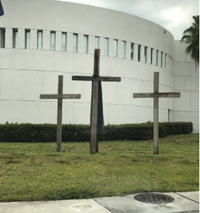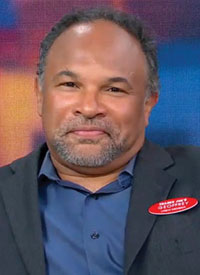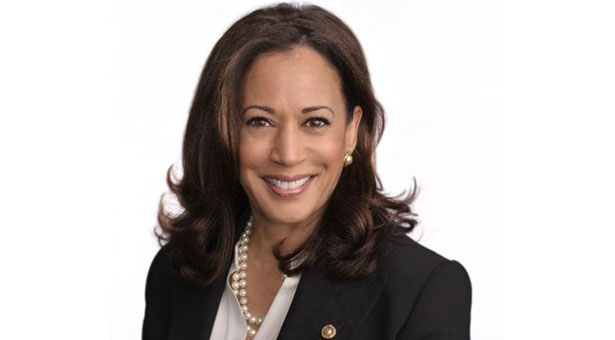
 Black America and the class divide
Black America and the class divide
The economic gap within the African-American community is one of the most important factors in the rise of Black Lives Matter, led by a new generation of college graduates and students.
Today’s student activists could be considered the grandchildren of W.E.B. Du Bois’s “Talented 10th.” Above, protesting last November at the University of Missouri’s Columbia campus. Daniel Brenner For The New York Times
By Henry Louis Gates, Jr.
In 1903, W. E. B. Du Bois, the leading scholar of the first half of the 20th century, defined the urgency of Black social responsibility in his famous essay “The Talented Tenth” — 10 being the percentage of the African-American demographic needed to lead the race into an integrated, equal America. In “The Talented Tenth,” Du Bois called for “intelligent leadership” directed by “college-trained men” devoted to a “thorough understanding of the mass of Negroes and their problems” for the purpose of solving these problems, still so deeply entrenched a half century after the abolition of slavery.
Forty-five years later, Du Bois would lament, this call had been largely ignored. He worried aloud about the growing class divide within Black America and how the consequences of that divide might affect the task of “lifting as we climb,” the motto of the National Association of Colored Women’s Clubs, describing the privilege and burden of the middle class to facilitate Black upward mobility.
Indeed, by 1948 Du Bois felt that the new Black middle class had forgotten this noble calling. There had been, even during his college days at Fisk, troublesome warning signs: “sharp young persons, who received the education given very cheaply at Fisk University, with the distinct and single-minded idea, of seeing how much they could make out of it for themselves, and nobody else.”
Du Bois knew, of course, that any Black person at that time had to struggle to tear down barriers just to lift oneself and one’s family. But that was not enough: Successful Black people, he said, must recognize that their place in life was merely a matter of opportunity. “If such opportunity were extended and broadened, a thousand times as many Negroes could join the ranks of the educated and able, instead of sinking into poverty, disease, and crime.”
Du Bois also knew that Black America had never consisted of one social or economic class. Even before the outbreak of the Civil War, about 11 percent of Black America was free, some born into families that had been free for generations. And in 1899, when Du Bois published his seminal sociological study, “The Philadelphia Negro,” he was already noting that these two classes had morphed into four: the middle class and above, working people (“fair to comfortable”), the poor and, in terms his Victorian contemporaries would have approved of, the “vicious and criminal classes.”
Du Bois would probably be astonished to see how these classes have fared, especially since the death of the Rev. Dr. Martin Luther King Jr. in 1968, just as new affirmative action programs were beginning to expand drastically the ranks of Black students on white campuses and thus to affect the class structure of Black America.
The Harvard sociologist William Julius Wilson calls the remarkable gains in Black income “the most significant change” since Dr. King’s passing. When adjusted for inflation to 2014 dollars, the percentage of African Americans making at least $75,000 more than doubled from 1970 to 2014, to 21 percent. Those making $100,000 or more nearly quadrupled, to 13 percent (in contrast, white Americans saw a less impressive increase, from 11 to 26 percent). Du Bois’s “talented 10th” has become the “prosperous 13 percent.”
But, Dr. Wilson is quick to note, the percentage of Black America with income below $15,000 declined by only four percentage points, to 22 percent.
In other words, there are really two nations within Black America. The problem of income inequality, Dr. Wilson concludes, is not between Black America and White America but between Black haves and have-nots, something we don’t often discuss in public in an era dominated by a narrative of fear and failure and the claim that racism impacts 42 million people in all the same ways.
What effect, many of us have worried, would this unprecedented rise in prosperity have on the New Millennials? Would they heed Du Bois’s call, as students like John Lewis and Julian Bond, Charlayne Hunter and Diane Nash did under the leadership of the “Negro Gandhi” presciently predicted by Du Bois back in 1948?
The class divide is, in my opinion, one of the most important and overlooked factors in the rise of Black Lives Matter, led by a new generation of college graduates and students. I hear about it from my students at Harvard, about the pressure they feel to rise, yes, but also the necessity to then look back to lift others.
I asked Kimiko Matsuda-Lawrence, a senior, what was behind the racial unrest on campus. Ms. Matusda-Lawrence is co-founder of “I, Too, Am Harvard,” a multiplatform campaign that gives voice to students who often go unheard and that brought the concept of micro-aggressions into the light. She described the motivation as “our sense of responsibility to the Black communities who do not have access to the universities we attend.” The goal: “to call out the ways our own institutions participate in and perpetuate structures of racism that affect the Black communities we represent through our presence at places like Harvard.”
That is, the college campus is a microcosm of practices at work in the larger society, something of a laboratory in which America’s racial experiment might be altered.
Unlike the way they are framed in so many op-eds, modern-day activists, Ms. Matsuda-Lawrence says, are anything but “a bunch of oversensitive, privileged and coddled Black college students complaining and whining that they don’t feel safe because of building names and house master titles.”
Consider them, instead, the grandchildren of Du Bois’s “talented 10th,” taking their cues, wittingly or unwittingly, from the challenge that he and the civil rights activists of the ’60s issued to Black leadership. Many of today’s Black activists are the children of middle- and upper-middle-class parents — the affirmative action generation — and may be realizing, as Charlayne Hunter-Gault put it to me, “that privilege doesn’t always translate as they thought it would.”
Despite the highs — the escalating successes in finance, business, public service, education and entertainment (think beyond President Obama and sports figures to the American Express C.E.O. Kenneth Chenault, Attorney General Loretta E. Lynch, and the queen of Thursday-night TV, Shonda Rhimes) — there have been far too many lows, too many moments in which we as a country have come face to face with the deprivation, disenfranchisement, marginalization and flat-out abuse of African-Americans at the socioeconomic bottom.
The disparity of opportunity plagues Black America perhaps even more starkly now, given its extremes, than the economic reality that motivated Dr. King to transfer the focus of his movement from civil rights to economic justice, as exemplified in his last, tragically aborted effort to mount a “Poor People’s Campaign.”
The childhood poverty rate for African-Americans remains stubbornly close to what it was the day Dr. King was assassinated; unemployment for Black Americans runs nearly double that of the national average; and the distrust between impoverished communities and the police continues to spiral (helped in no small part by the fact that Blacks make up more than a third of the prison population, compared to only 13 percent of the overall population).
And we still confront the question that arose the moment the first slave ships arrived: Do Black lives matter?
It is into this whiplash environment of economic inequality that college students have come of age. They were youngsters when Hurricane Katrina engulfed New Orleans — for a time the ultimate symbol of inequality of income and opportunity — and teenagers when George Zimmerman killed Trayvon Martin. They have been consumed by a roster of recorded police killings of unarmed Black men and boys since August 2014, when Michael Brown was killed in Ferguson, Mo., followed by similar assaults in Staten Island, Cleveland, Chicago and North Charleston, S.C.
Black women and girls haven’t escaped injustices, either. We need think only of the young girl in the Mall of America who was restrained by a security guard or the teenager in South Carolina who was thrown from her desk by a school resource officer, or the 13 Black women who testified against the former Oklahoma City police officer Daniel Holtzclaw, who was convicted of rape.
The nation’s African-American students are searching profoundly and visibly for a definitive end to racial injustice. College campuses, Du Bois’s proving grounds for the training and testing of social responsibility and leadership, have once again become a primary front in the battle against inequality — from “I, Too, Am Harvard,” a concept that has spread from Berkeley to New York University, to the principled protest of football players at the University of Missouri against racial insensitivity, to demonstrations at Brown and Brandeis, Princeton and Yale.
A number of administrators have voiced strong support for these protests as well as an institutional will to change, be it renaming buildings or re-evaluating the makeup of their student body and faculty.
Change, even at the symbolic level, is difficult, of course, and it remains to be seen what this current wave of protests will accomplish. Will the fight against police brutality, symbols of the Confederacy and society’s plethora of micro-aggressions become the basis of a broader movement for the improvement of underfunded public school education, for the right to a job with decent wages, and for the end of residential segregation that relegates the poor to neighborhoods with murder rates as alarming as those on the South Side of Chicago?
What is certain is that the outrage that led to Black Lives Matter and its spinoffs will be with us for years to come unless these legacies of slavery and Jim Crow become remnants of a racist past.
Henry Louis Gates Jr. is co-author of “And Still I Rise: Black America Since MLK,” host of “Finding Your Roots” on PBS and director of the Hutchins Center for African and African American Research at Harvard.





Be the first to comment